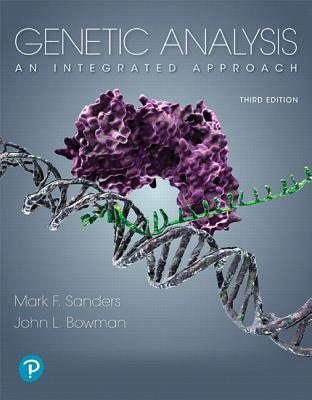Genetic Analysis Sanders Solution Manual
Salient Features An integrative problem-solving approach presents a consistent and effective strategy for students to work through genetics problems. Genetic Analysis sections guide students with a unique, three step approach that trains them to Evaluate, Deduce, and then Solve problems. Each Genetic Analysis is presented in a clear, two-column format that helps students see the Solution Strategy in one column and its corresponding execution in the Solution Step. Airbus manual wing corrosion.

Genetic Analysis sections are integrated throughout each chapter, right after discussions of important content. Each one includes helpful Tips to highlight critical steps and Pitfalls to avoid, as well as references to similar problems at the end of the chapter for additional practice.
End-of-Chapter Problems are divided into separate sections labeled Chapter Concepts and Application and Integration. The book offers a broad range of question types and level of difficulty.

Answers to even-numbered problems appear in the Appendix. The Accompanying Student Solutions Manual and Study Guide provides additional worked problems along with tips for solving problems. It also presents solutions to all of the textbook problems in a consistent Evaluate, Deduce, and Solve format to complement the approach modeled in the Genetic Analysis examples.
Thorough coverage of Experiments and Research Techniques engages students in the process of science and subsequent genetics discoveries. Experimental Insight essays discuss influential experiments, summarize real experimental data derived from the experiments, and explain conclusions drawn from the analysis of results. Research Technique boxes explore important research methods and visually illustrate the results and interpretations of the techniques.
Unique Chapter 10: The Integration of Genetic Approaches integrates transmission genetics, molecular analysis, molecular techniques, and evolution in an exploration of sickle cell disease. Case Studies are short, real-world examples that appear at the end of every chapter and highlight central ideas or concepts of the chapter with interesting examples that remind students of some practical applications of genetics. Carefully crafted summaries and figures help students distill the most important 'take home' lessons in each chapter.
Introduction To Genetic Analysis
Genetic Insights appear several times within each chapter and help students recognize and understand key concepts at-a-glance. Foundation Figures integrate text and art to illustrate pivotal genetics concepts in a concise, easy-to-follow format. An integrative evolutionary perspective is demonstrated throughout the book, helping students keep sight of important evolutionary principles as they are learning the core genetics concepts. Examples include a discussion of sickle cell evolution in Chapter 10 and evolutionary questions presented by the genetic code in Chapter 11. Connecting and integrating transmission and molecular genetics helps students understand how today's geneticists think.